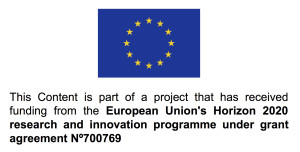AIAC Cologne/Bonn 22 – 26 May 2018
The aim of this panel was to showcase different forms and concepts of trust, examples of commodity branding in the ancient world and the production of fakes in order to address some underlying dynamics of interaction in ancient economic systems. The final line-up included four case studies covering the Archaic to Hellenistic periods, from the Greek mainland and islands as well as modern day Turkey. Presentations were made by three stimulating scholars—Vasiliki Barlou, Simone Killen and Kathleen Garland—from whom I learnt a lot, as well as myself. The concluding panel discussion was excellently steered by Sabine Huy.
— “What’s in a name?” Creating brands and trademarks in ancient Greek sculpture, Vasiliki Barlou (Justus-Liebig-Universität Gießen)
— Trust in tradesman: How poleis protected their consumers, Simone Killen (Universität Wien)
— “Amphoras on amphoras”: diachronic perspectives on trade and the use of the amphora image, Anja Slawisch (Cambridge University)
— Stamps of approval: signalling authenticity in Hellenistic packaging, Kathleen Garland (Cornell University)
To briefly summarize some emerging common themes of the panel:-
Much of the discussion was focussed on the different ways trust was created in antiquity: by the repeated intentional interlinking of personal names (for example the signature of a sculptor) or recognisable objects and symbols (esp. containers for examples amphora) with particular places of origin.
The reputation of excellence for particular products seems, in some cases, to have been enough to allow sustained and augmented demand for them. City symbols (parasema) acted as symbolic guarantors and hence enabled sellers to transfer trust in weight measures to the community as a whole and away from private negotiations. Simultaneously these city images travelled around the ancient world advertising product place of origin. Packaging of the products in connection with the usage of symbols – either by choosing distinctive and easily recognisable shapes for the container; by means of stamping, or a combination of both – could act as a strong visual marker of origin and quality once reputation had been established. While the case-studies confirmed the strong relationship between systems of trust and strategies to create positive reputations, it became clear that the particular ways in which the individual reputation was created and how reputation and trust interact are themes which need further investigation.
I would like to express my thanks to all participants for their enthusiastic participation and discussions, on whose theme we hope to develop further collaboration.
The full programme and all abstracts of the AIAC 2018 can be found here http://www.aiac2018.de/
Panel 5.18 – Trust, Branding and Fakes in the ancient World


